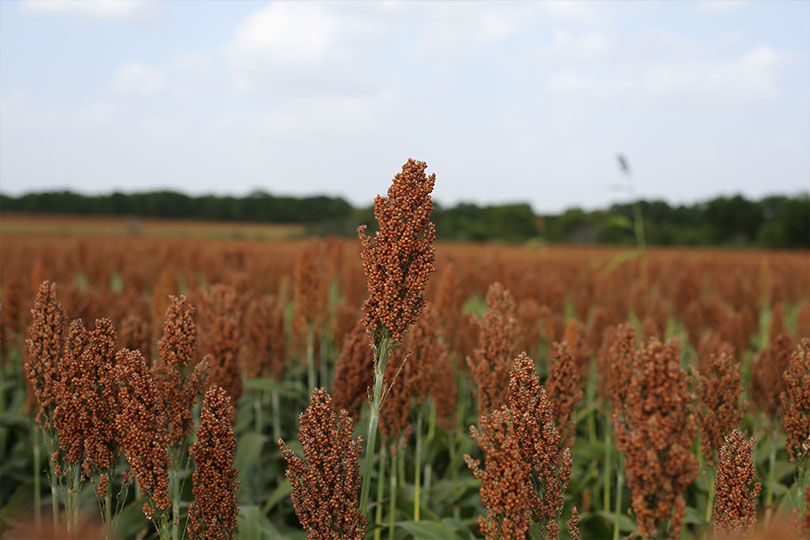By Shelby Shank
Field Editor
The number of dairy cattle in Texas is increasing, specifically near the Ogallala Aquifer. Limited water resources are pushing producers and researchers like Dr. Juan Piñeiro and Douglas Duhatschek to seek out drought-tolerant forages to meet the growing demand for cattle feed.
Corn silage has been commonly used to feed dairy cattle, but it requires more water than sorghum. Piñeiro and Duhatschek have spent the past two years researching how sorghum can be used in cattle feed. However, energy is the biggest concern for lactating dairy cows, and sorghum produces less metabolizable energy than corn.
Piñeiro and Duhatschek’s research indicates high sugar content in male-sterile sorghum hybrids may offer an opportunity to produce forage with highly digestible fiber and good energy content with less water.
Starch is a substantial part of dairy cattle diets, and high starch content is a source of energy for cows. Starch in whole-plant forage sorghum silage is less digestible than starch in corn. This is because sorghum berries do not break down enough in the processing to allow for maximum digestibility.
Piñeiro and Duhatschek’s conducted two studies evaluating the starch digestibility of forage sorghum. The first study focused on shorter plants with more grain than leaves and stems. The research team wanted to see if the increase in reproductive-to-vegetative plant parts ratio would increase the overall starch digestibility.
The second study utilized two male-sterile hybrids that do not develop grain. One is a brown midrib, BMR hybrid, and the second is a non-BMR hybrid.
“We focused on forage digestibility and noticed that since these hybrids do not develop grain, the content of sugars at harvest is four to five times higher than with other sorghums that develop grain,” Piñeiro said. “For these male-sterile hybrids, we only have some preliminary results, but they look promising.”
Fiber digestibility of BMR hybrids is similar to corn silage.
BMR and non-BMR male-sterile hybrids store high sugar content because they do not develop grain and also store less starch. These plant sugars could replace energy loss due to low starch concentration.
This growing season, researchers will replicate the trial to evaluate the effect of plant reproductive to vegetative parts ratio on the berry processing score. Researchers will also feed the male-sterile sorghum to dairy cows to evaluate performance of milk yield and milk composition.
These research projects could increase the nutritional value of sorghum silage for farmers and replace corn silage fed to lactating cows. Additionally, sorghum silage could decrease drought-stress impacts and potentially save water on forage production.
To learn more, click here.

